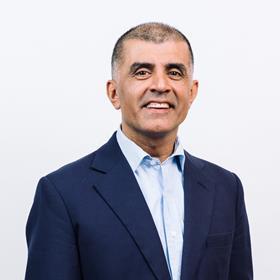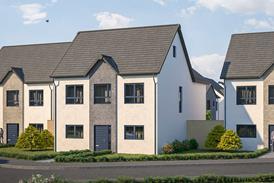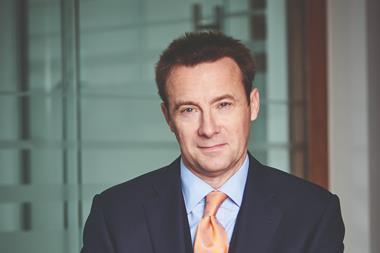After a tumultuous 2020, property’s leading figures share their hopes and expectations for 2021 as the year gets off to a rocky start with yet another lockdown.

Sarwjit Sambhi
Chief executive, St Modwen
Like everyone, I hope that 2021 is very different to 2020. I expect us to get back to the resemblance of normality by summer. Then, I will be cheer-leading the return to our offices, restaurants, hotels, concert venues, theatres and all the other sectors that have been disproportionately hit by the pandemic.
I want this not just for our economic health but equally for our societal health.
To accelerate recovery, I hope that business and government work more closely together to remove obstacles to investment and create more employment, more infrastructure and fewer carbon emissions.

Mark Granger
Chief executive, Carter Jonas
The ramifications of the latest lockdown and Brexit will have a huge influence on the course of the first half of the year, at the very least. As consultants, we must advise on two fronts – helping clients adapt and deal with any immediate impact whilst working with them to plan for the future, which requires a strategic and scenario-based approach.
As we start to recover from our present circumstances, I expect politicians to pursue longer-term ambitions, such as delivering net-zero by 2050, and the levelling up of our economy. The property industry has a vital role to play and, consequently, I expect greater scrutiny of our decision-making processes.
Concepts once considered niche – such as biodiversity net gain – are entering mainstream policy to encourage a more circular, sustainable approach to development. Questions regarding the potential economic, sociological, and environmental impact of new development will come to the fore.
Post-Covid-19, post-Brexit priorities will shift even more strongly in this direction and our industry must be ready.

Isabelle Scemama
Chief executive, AXA IM – Real Assets
Going into 2021, we expect caution will continue to be taken as investors allocate towards defensive sectors, such as logistics, built to rent (BTR), and healthcare, which are underpinned by macro tailwinds, including structural and demographic shifts occurring in our economies.
Meanwhile, the pandemic clearly exacerbated the strain on profitability for the retail sector and forced a more rapid dialogue between occupiers and landlords.
The acceleration of the trends which plagued retail is likely to lead to rental levels being rebased to a more affordable and sustainable level from 2021.
Finally, the extension of the lower-for-longer interest rate environment will place property in an attractive relative value position as capital sources will target different aspects of the market, depending upon their ultimate risk/return requirements.
We expect the weight of capital targeting the sector to support valuations while continued Covid-related disruptions differentiate underlying property type performance.

John Mulryan
Group managing director, Ballymore
We hope 2021 will bring a feeling of certainty and security, restoring confidence in the market. Local retailers emerged as some of the heroes of the pandemic and we’re hoping to see these businesses, especially independents, continue to thrive.
More widely, having completed several of our large regeneration schemes, including London City Island and Royal Wharf, this year and with Wardian soon to complete, we’ll be turning our focus to advancing projects in Edgware, Ladbroke Grove and Shoreditch, as well as ongoing work in the Docklands.
Last year, there was a seismic shift towards localised living, with our high streets and town centres places we are now more protective of. As our cities reopen, we expect this change in lifestyle and mentality to stay. For us, it will.
Our plans for the rejuvenation of Brentford’s town centre remain unchanged; we’ll be creating a new high street for Shoreditch; and will be bringing a local neighbourhood feel to Canary Wharf for the first time as we launch our urban village Mill Harbour.
The pandemic has shone a spotlight on the importance of well-balanced, mixed-use developments like these, especially in urban areas, driven by consumers with a fresh focus on their own needs.
Continue to part three here
Forecast for 2021: looking ahead with hope
- 1
- 2
 Currently reading
Currently readingForecast for 2021: looking ahead with hope (part two)
- 3
- 4
- 5
- 6
- 7
- 8
- 9
- 10
- 11
- 12
- 13
- 14
- 15
- 16
- 17
- 18
- 19
- 20
- 21
- 22
- 23
- 24
- 25
- 26
- 27
- 28
- 29
- 30
- 31
- 32
- 33
- 34
- 35
- 36
- 37
- 38
- 39
- 40
- 41
- 42









































































No comments yet